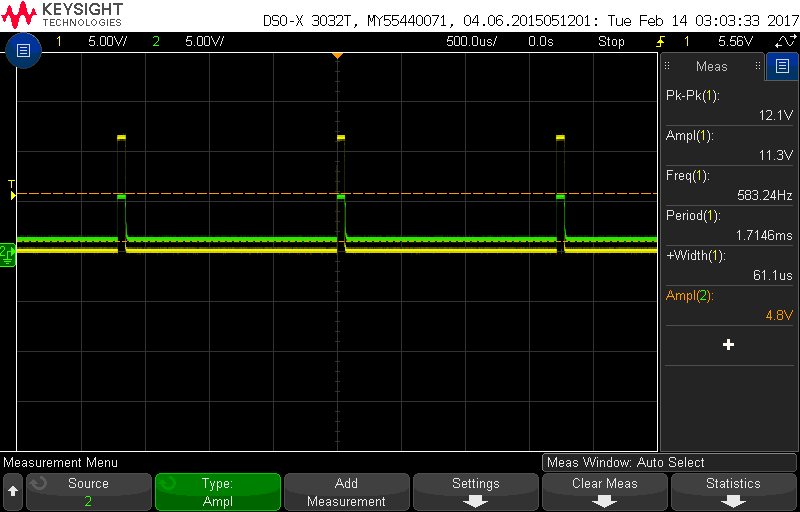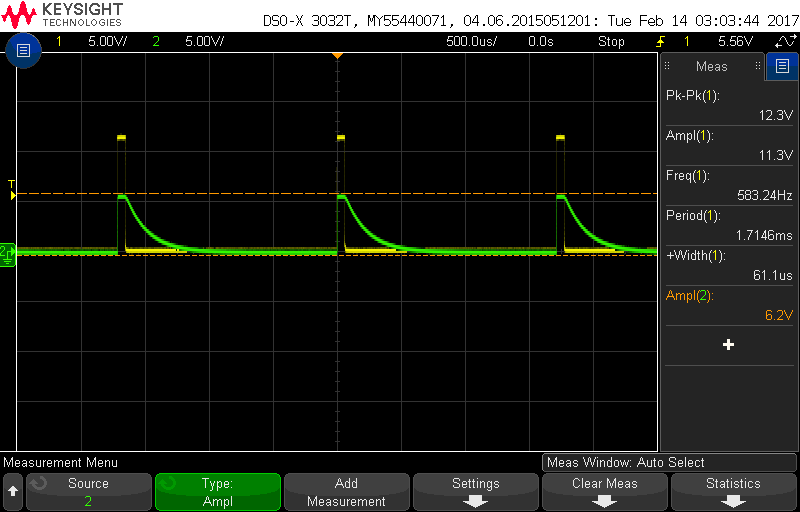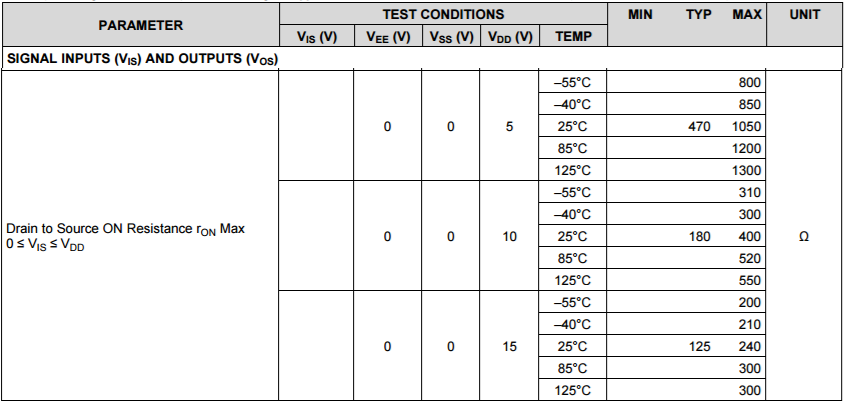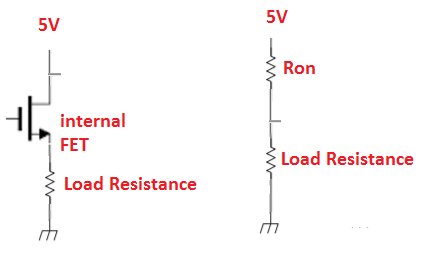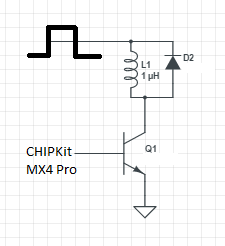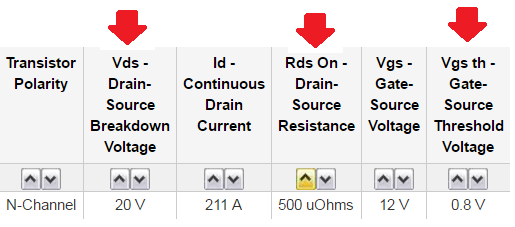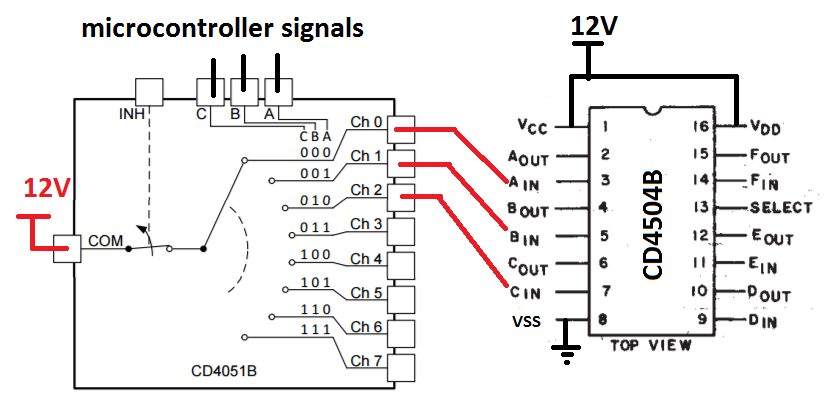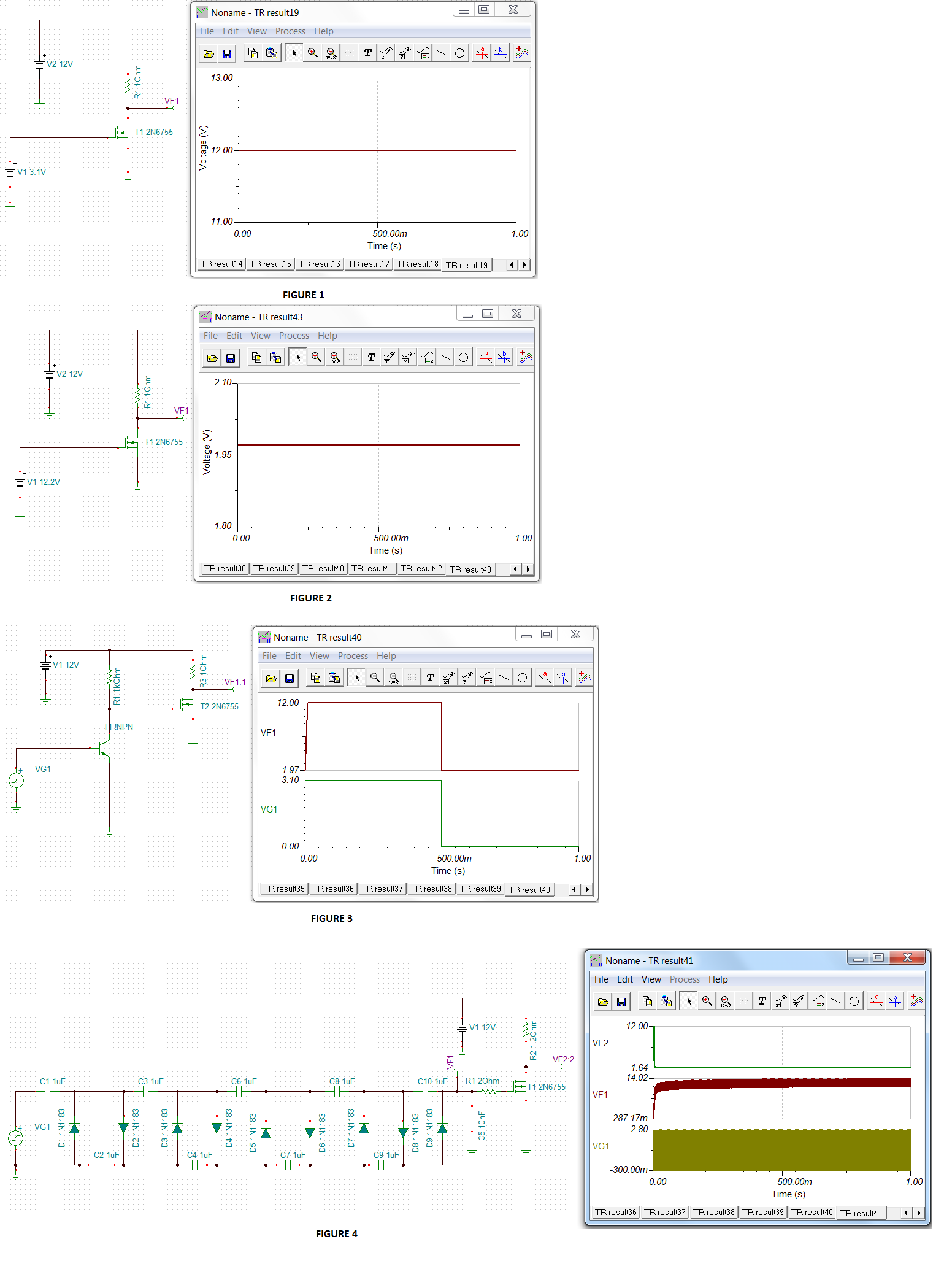Other Parts Discussed in Thread: TS12A12511
I was looking for some advice on a chip I have been trying to use for my senior design project called the CD4051B. So we are trying to send a pulse through the chip and have it switch between three loads consisting of three coils; we only want one load at a time on while the other two are off. We are currently using a micro-controller with an output of 3.3V as the select lines of the chip and a supply voltage of 5V to the chip's Vdd. Currently the issue we are having is that the output does not match the input, there are losses, and the channels that are supposed to be off are not completely off. I will attach the pinout below as well as pictures of the output I am getting. The answers I am looking for is how do I drive those signals down to zero instead of the decaying signal I am getting now and is there a way to avoid these losses. The details of the pulse can be found in the oscilloscope pictures below. I only need three channels so I connected the third select line to ground; the third image shows how I am connecting everything.
Yellow=input, Green = output "ON"
Yellow=input, Green = output "OFF"


